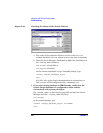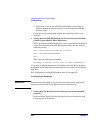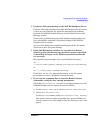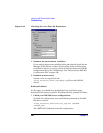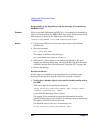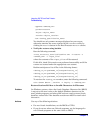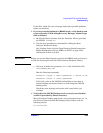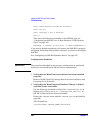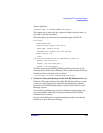
Integrating SAP R/3 and Data Protector
Troubleshooting
Chapter 2224
-appname:<ORACLE_SID>
-perform:restore
-object:<object_name>
-version:<object_version>
-bar:<backup_specification_name>
You should see only NORMAL messages displayed on your screen,
otherwise examine the errors reported by the testbar2 utility by
clicking the Details button in the Data Protector Monitor context.
4. Verify the restore using backint
Run the following command:
<Data_Protector_home>\bin\backint.exe -f restore -u
<ORACLE_SID> -i <input_file>
where the contents of the <input_file> will be restored.
If this fails, check if the session was performed successfully and if the
restore was started under the appropriate user account.
Backint anticipates a list of files in the following format:
<backup_ID_1> <pathName_1> [<targetDirectory_1>]
<backup_ID_2> <pathName_2> [<targetDirectory_2>]
<backup_ID_3> <pathName_3> [<targetDirectory_3>]
To retrieve the <backup_ID> numbers, enter the following command:
echo "#NULL #NULL" | backint –f inquiry –u <ORACLE_SID>
Restore Sessions Fail due to Invalid Characters in Filenames
Problem On Windows systems, where the Oracle Database Character Set (DBCS)
is not set to the same value as the default Windows character set for
non-Unicode programs, and where SAP tools are used to create Oracle
datafiles, restore fails if the datafiles contain non-ASCII or non-Latin 1
characters.
Actions Use any of the following solutions:
• For new Oracle installations, set the DBCS to UTF-8.
• If you do not use other non-Unicode programs, set the language for
non-Unicode programs to the same value as DBCS.



